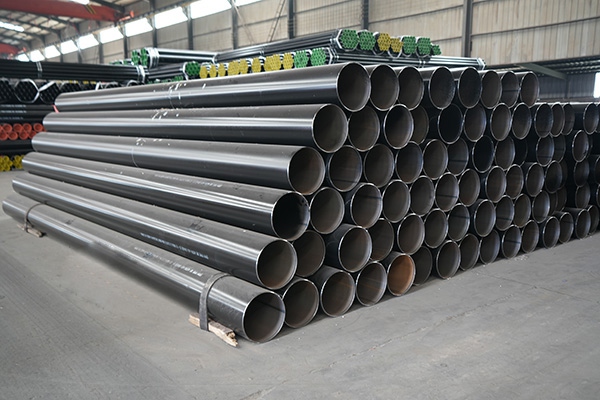
Operating pipelines and process systems in freezing climates demands materials that will not lose integrity at low temperatures. A Low Temperature Steel Pipe designed to ASTM A333-6 specifications offers excellent mechanical resilience, even when exposed to Arctic-level cold.
This guide outlines its composition, benefits, production methods, and practical advice for ensuring dependable performance in the most demanding conditions.
What Makes Low Temperature Steel Pipe Different?
Unlike conventional carbon steel, Low Temperature Steel Pipe incorporates a refined carbon-manganese composition, tailored to maintain flexibility and toughness far below zero.
Key ASTM A333-6 Performance Metrics:
·Material Composition: Fine-grain carbon-manganese steel
·Tensile Strength: 415–585 MPa range
·Minimum Yield Strength: 240 MPa
·Impact Test Temperature: -50°F (-45°C)
·Elongation Capability: ≥ 30%
These properties ensure that the pipe remains resistant to fracture, even under sudden temperature drops.
Importance of ASTM Standards in Cold-Weather Piping
ASTM standards, such as A333-6, serve as globally recognized quality benchmarks. For low-temperature service, this means:
·Chemical composition is carefully balanced to prevent cold embrittlement.
·Mechanical properties are validated through rigorous low-temperature impact testing.
·Dimensional and surface quality meet strict manufacturing tolerances.
·Every batch is subject to traceable certification for full compliance.

Where ASTM A333-6 Pipes Are Commonly Applied
Due to their low-temperature endurance, ASTM A333-6 pipes are often found in:
·Arctic Oil and Gas Infrastructure – Transporting fluids in extreme cold.
·Cryogenic Storage and Transfer Lines – Safely conveying liquefied gases.
·Cold-Zone Power Stations – Feeding steam and water systems in freezing climates.
·Marine and Offshore Facilities – Withstanding constant exposure to icy water and wind.
From Steel Billet to Finished Pipe – The Manufacturing Path
·Selection of Steel Billets – Only billets that pass ASTM chemical and mechanical benchmarks are used.
·PiercingHot Rolling – Solid billets are pierced and rolled to create seamless tubes.
·Controlled Heat Treatment – Processes like normalizing enhance microstructure toughness.
·Comprehensive Testing – Including hydrostatic, ultrasonic, and low-temperature impact evaluations.
Choosing the Right Pipe for Your Project
When specifying Low Temperature Steel Pipe, consider:
·Service Temperature Range – Confirm suitability for your coldest expected operating point.
·Certification and Traceability – Ensure full ASTM A333-6 compliance documentation.
·Protective Coatings – To guard against environmental corrosion.
·Maintenance Planning – Periodic checks help preserve long-term performance.
Maintenance Recommendations for Extreme Climates
·Store under cover to avoid pre-installation corrosion.
·Inspect at regular intervals for early-stage damage.
·Use proper lifting and handling equipment to prevent physical stress.
·Apply additional protective wraps or coatings where exposure is severe.
Conclusion
In cold-climate applications, the choice of piping material can define the safety and efficiency of the entire system. Low Temperature Steel Pipe made to ASTM A333-6 standards offers the perfect balance of tensile strength, ductility, and verified low-temperature impact resistance.
Whether installed in offshore rigs, cryogenic facilities, or Arctic pipelines, these pipes deliver the consistency and resilience needed for decades of dependable operation in the harshest conditions.
References
GB/T 7714:Zhao B, Ai F, Yuan Q, et al. Effect of normalizing on impact and corrosion resistance of low-temperature service seamless steel pipe[C]//Journal of Physics: Conference Series. IOP Publishing, 2023, 2463(1): 012011.
MLA:Zhao, Bo, et al. "Effect of normalizing on impact and corrosion resistance of low-temperature service seamless steel pipe." Journal of Physics: Conference Series. Vol. 2463. No. 1. IOP Publishing, 2023.
APA:Zhao, B., Ai, F., Yuan, Q., Wu, H., Cheng, J., Wang, S., & Xie, D. (2023, March). Effect of normalizing on impact and corrosion resistance of low-temperature service seamless steel pipe. In Journal of Physics: Conference Series (Vol. 2463, No. 1, p. 012011). IOP Publishing.





